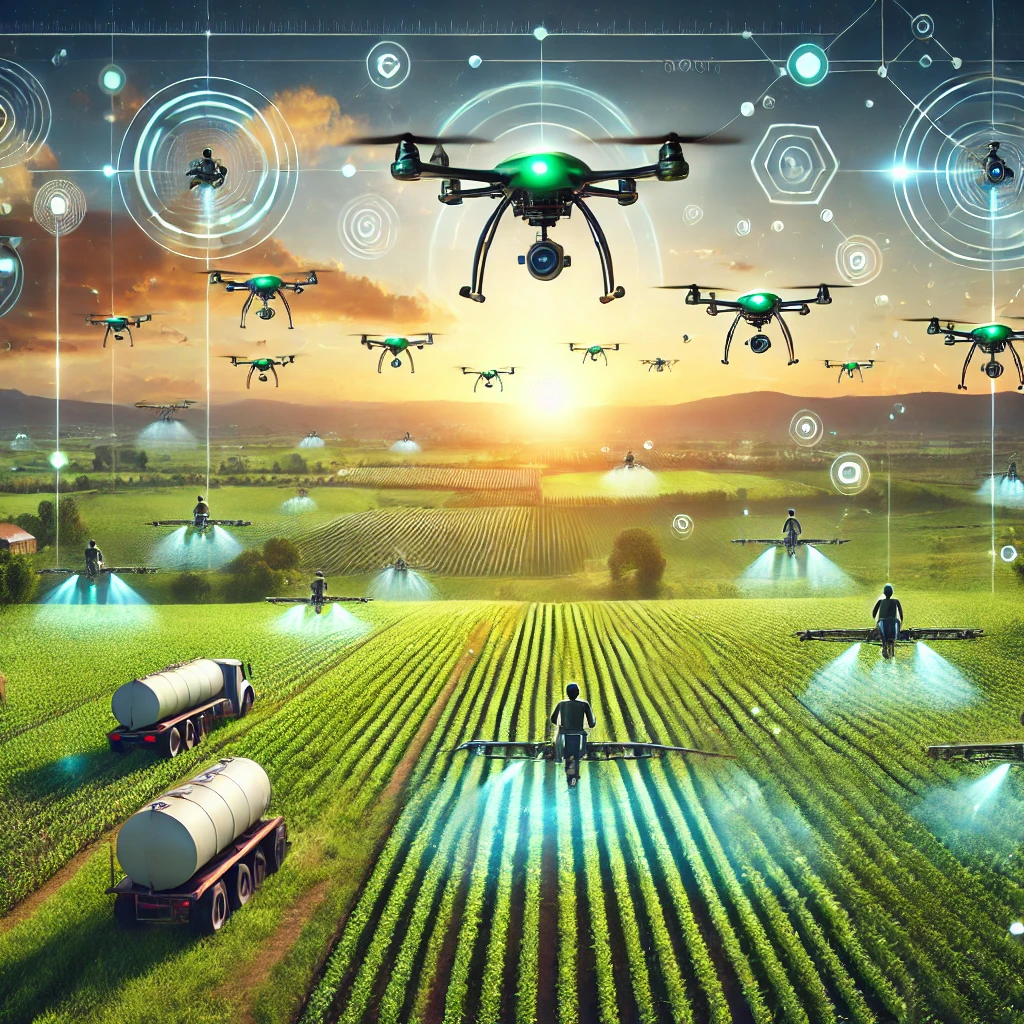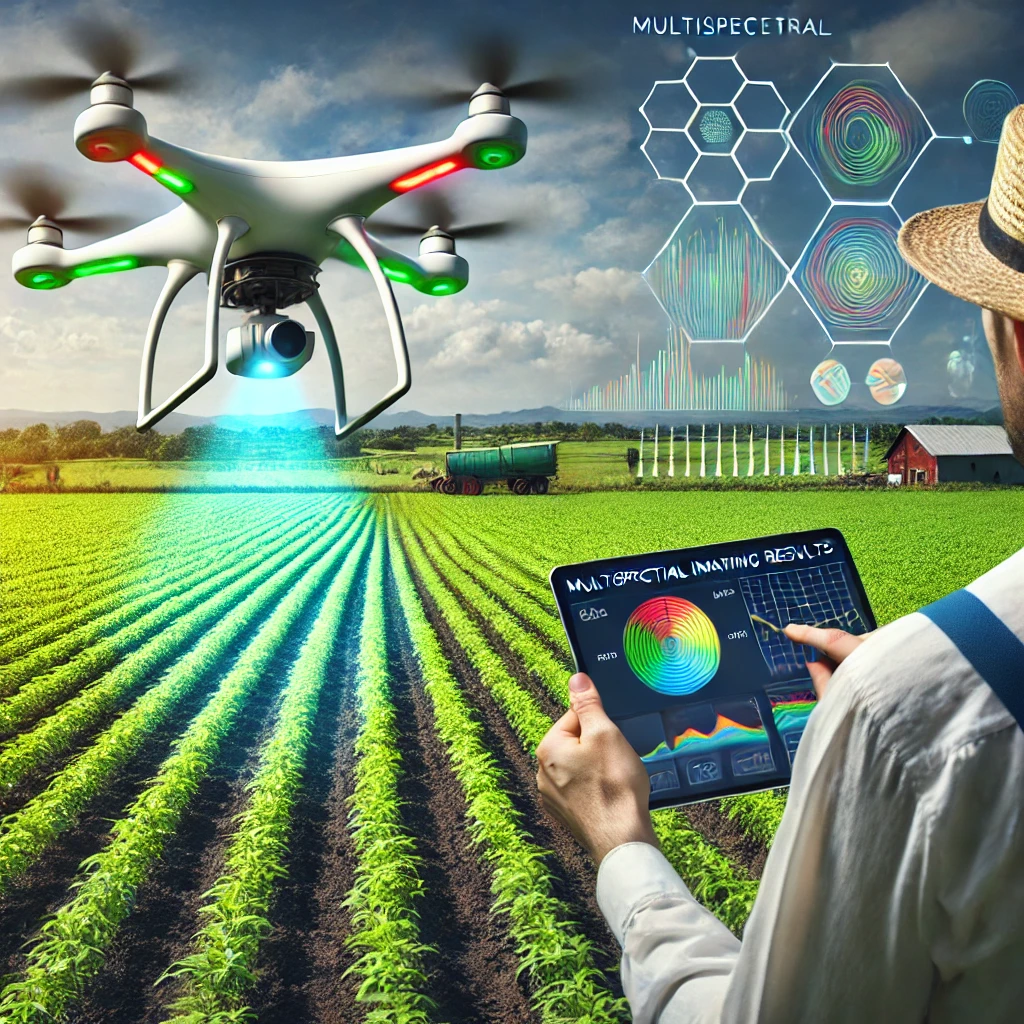Drones, once a futuristic concept, are now revolutionizing the agricultural industry. These unmanned aerial vehicles (UAVs) are not just for tech enthusiasts or photographers; they’re becoming indispensable tools for farmers worldwide. From monitoring crops to optimizing irrigation, drones are transforming traditional farming methods. Let’s dive into 10 real-life applications of drones in farming and explore how they’re making agriculture smarter, more efficient, and sustainable.

1. Crop Monitoring and Analysis
One of the most significant applications of drones in farming is crop monitoring. Traditional methods of inspecting crops can be time-consuming and labor-intensive. Drones equipped with high-resolution cameras and sensors can fly over fields, capturing detailed images and data. This allows farmers to monitor crop health, detect diseases, and identify pest infestations early on.
For instance, multispectral imaging can reveal issues invisible to the naked eye, such as nutrient deficiencies or water stress. By analyzing this data, farmers can make informed decisions, ensuring their crops remain healthy and productive. It’s like having a bird’s-eye view of your farm, but with superpowers!
2. Precision Agriculture
Precision agriculture is all about optimizing resources and maximizing yields. Drones play a crucial role in this by providing precise data on soil conditions, crop health, and weather patterns. With this information, farmers can apply fertilizers, pesticides, and water only where needed, reducing waste and environmental impact.
Imagine having a drone map out your field, highlighting areas that need attention. This targeted approach not only saves time and money but also promotes sustainable farming practices. It’s a win-win for both farmers and the planet!

3. Soil and Field Analysis
Before planting, it’s essential to understand the soil’s condition. Drones equipped with advanced sensors can analyze soil properties, such as moisture levels, pH balance, and nutrient content. This data helps farmers determine the best crops to plant and the optimal time for planting.
Additionally, drones can create 3D maps of fields, identifying uneven terrain or drainage issues. By addressing these problems early, farmers can improve crop yields and reduce the risk of crop failure. It’s like giving your soil a health check-up before the growing season begins.
4. Planting and Seeding
Believe it or not, drones can even assist in planting and seeding. Specialized drones are designed to carry seed pods and disperse them across fields. This method is particularly useful for reforestation or planting in hard-to-reach areas.
In farming, drone seeding can ensure even distribution of seeds, reducing labor costs and increasing efficiency. It’s a futuristic approach that’s already making waves in the agricultural world.
5. Irrigation Management
Water is a precious resource, and efficient irrigation is crucial for sustainable farming. Drones equipped with thermal cameras can detect areas of a field that are either over-watered or under-watered. This information helps farmers optimize their irrigation systems, ensuring crops receive the right amount of water.
By preventing water wastage, drones contribute to water conservation efforts, which is especially important in regions facing water scarcity. It’s a smart way to keep your crops hydrated without breaking the bank.
6. Crop Spraying
Gone are the days when farmers had to manually spray pesticides or fertilizers across vast fields. Drones can now handle this task with precision and efficiency. Equipped with sprayers, drones can cover large areas quickly, ensuring even distribution of chemicals.
This method reduces human exposure to harmful chemicals and minimizes the risk of over-spraying. Plus, drones can access areas that are difficult to reach by traditional means, such as steep slopes or dense crops. It’s a safer, faster, and more effective way to protect your crops.
7. Livestock Monitoring
Drones aren’t just for crops; they’re also useful for livestock management. Farmers can use drones to monitor their animals, track their movements, and ensure they’re healthy and safe. Thermal imaging can even detect sick or injured animals that might otherwise go unnoticed.
This application is particularly beneficial for large ranches, where manually checking on livestock can be challenging. With drones, farmers can keep a close eye on their animals without breaking a sweat.
8. Crop Health Assessment
Early detection of crop diseases or pest infestations is crucial for preventing widespread damage. Drones equipped with advanced sensors can assess crop health by analyzing factors like chlorophyll levels and plant density.
By identifying problem areas early, farmers can take targeted action, saving both time and money. It’s like having a personal doctor for your crops, ensuring they stay in tip-top shape throughout the growing season.
9. Yield Estimation
Predicting crop yields is essential for planning and decision-making. Drones can capture detailed images of fields, which are then analyzed to estimate yields. This information helps farmers plan for harvest, storage, and marketing.
Accurate yield estimation also allows farmers to identify underperforming areas and take corrective measures. It’s a proactive approach that can significantly impact a farm’s profitability.
10. Disaster Management
Natural disasters like floods, droughts, or storms can devastate crops. Drones can assess damage quickly, providing farmers with real-time information. This allows for faster response times and better decision-making during emergencies.
In the aftermath of a disaster, drones can also help with recovery efforts, such as reseeding damaged fields or assessing soil conditions. It’s a lifeline for farmers when Mother Nature strikes.
Conclusion
Drones are no longer just a high-tech gadget; they’re a game-changer for modern farming. From crop monitoring to disaster management, these versatile tools are helping farmers work smarter, not harder. By embracing drone technology, farmers can increase efficiency, reduce costs, and promote sustainable practices.
As the agricultural industry continues to evolve, drones will undoubtedly play an even bigger role in shaping its future. So, whether you’re a seasoned farmer or just curious about the latest tech trends, it’s clear that drones are here to stay—and they’re transforming farming for the better.


